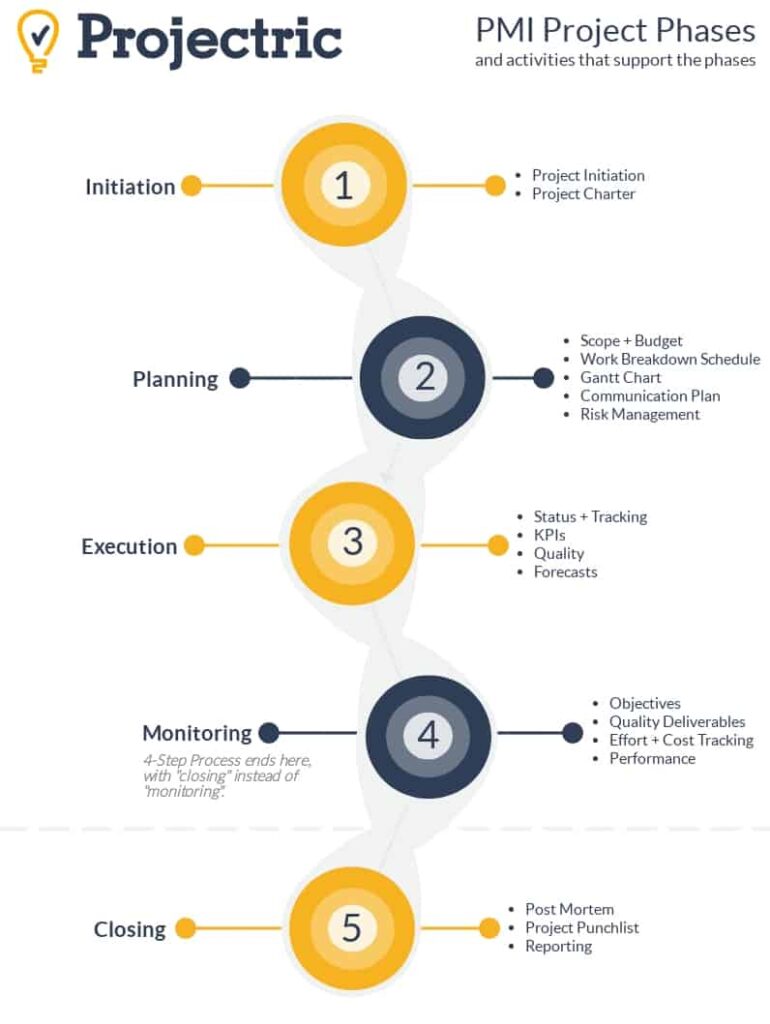Quick Take:
The phases of the Project Management Process are:
- Initiation
- Planning
- Execution
- Monitoring
- Closing
The Phases of the Project Management Process
Effective project management relies on a series of processes. For waterfall project management, these processes are commonly organized into phases. These phases generally run linearly and sequentially with a Big Bang at the end when the project delivers its planned result.
Agile project management also has phases, but they are more incremental and iterative and less step by step. This process values delivering pieces of the project during the span of the effort. We’ll discuss Agile project management in a future post.
Today, the majority of projects use the Waterfall Project Management Process, which is illustrated below. This simple graphic shows the key phases in the Project Management Process and associated activities for each step.

The information above is taken from the Project Management Institute (PMI). We include information for both Project Management 4 Phases and Project Management 5 Phases. The main difference between the two processes is that the 4-step process combines Steps 4 and 5 (Monitoring and Closing) and the activities that support those steps.
Project Portfolio Management (PPM) software such as Projectric supports the activities for each project phase. Read our blog post Mind Your P’s and M’s: PPM for PM to find out how PPM supports robust Project Management Methodologies.
We hope this overview helps as you refine your Project Management techniques. If you have questions, feel free to contact us and we’ll give you a hand.

